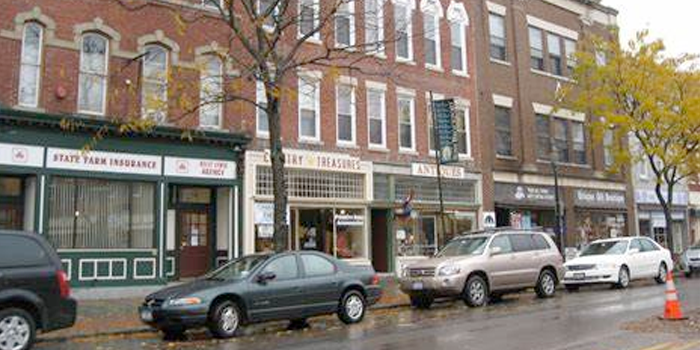
Opinion: The Fed should not be bailing out the underfunded pensions of cities and states
Expand the purchase of Main Street loans; limit the purchase of government loans
The Federal Reserve recently announced a dramatic expansion of its lending programs for companies and governmental units. Although these programs represent a tremendous effort to keep the U.S. economy going despite the coronavirus crisis, taxpayers should evaluate the design of these programs by asking two questions: Are they structured to avoid significant losses for the federal government in the near term? And do they establish a sound precedent for future Federal Reserve programs in the bond markets?
The answers to both questions are “Yes” for the Main Street New Loan Facility, and “No” for the Municipal Liquidity Facility. The Fed should expand and extend its Main Street Facility for purchasing loans of mid-size businesses, but it should not extend its Municipal Facility to purchasing longer term bonds from local governments with severely underfunded pension plans.
The Main Street New Loan Facility will support up to $600 billion in loans to mid-size businesses — defined as less than 10,000 employees or $2.5 billion in annual revenues. The Fed will set up a special purpose vehicle (SPV), backed by the U.S. Treasury, which will purchase 95% of eligible loans from US banking institutions.
Eligible loans to mid-size businesses will have a maximum loan amount equal to the lesser of $25 million or an amount not exceeding four times the borrower’s annual earnings (minus its existing debts). The terms will be attractive for unsecured loans: a 4-year maturity with a one-year grace period and no prepayment penalties, with an adjustable interest rate initially at 2.5% to 4% per year.
Since these eligible loans will be unsecured, not backed by any collateral or guarantees, the federal government could be taking a significant risk of loan losses. However, this risk is substantially mitigated by the requirement that the lending bank retain 5% of each loan purchased by the SPV. So the lending bank will have a powerful incentive to conduct a thorough due diligence before making these loans.
Some commentators, even from the Republican side, have called for the Fed to buy 100% of all eligible loans from banks making loans to mid-size businesses. But this approach proved disastrous before 2008 when many financial firms originated home mortgages and quickly sold 100% of them. Without any skin in the game, these financial firms did a shoddy job at due diligence.
Under the Main Street New Loan Facility, the borrowers must also make reasonable efforts to maintain employment, and must comply with other conditions designed to preserve company cash for loan repayments. For example, these conditions include prohibitions on stock repurchases and dividends, limitations on executive compensation, and continuation of current credit lines.
Given the extensive needs of mid-size businesses in the aftermath of this pandemic and the well-designed structure of this Facility, the Fed should expand this Facility to $900 billion, extend it through the end of 2021 and lower the initial interest rate to 2%.
By contrast, the Municipal Liquidity Facility (MLF) may lead to significant losses to the federal government. Again, the Fed will establish a special purpose entity, backed by the Treasury. Then the SPV will directly buy up to $500 billion in short term notes with maturities of 24 months or less from eligible issuers — any state and any of the largest citieis or counties..
But this Facility lacks several key protections needed to avoid significant loan losses. There is no lending bank to conduct due diligence and retain 5% of the notes. There are no conditions to maintain employment or reform pension practices. Nor is there any requirement that the notes of the state, city or county carry an investment grade rating, currently or before the coronavirus.
Although these short-term notes are backed ultimately by local taxes, tax revenues are likely to plunge over the next two years. Moreover, the program’s maximum loan amount is 20% of a governmental unit’s revenues during its last fiscal year — without taking into account the expenditures of that unit, including its obligations to fund defined benefit pension plans and make retiree health care payments.
Some governmental units have done a good job of managing their financial obligations, while others have shown little fiscal discipline. Before the coronavirus hit, the ratio of pension assets to pension liabilities was higher than 90% in Wisconsin, South Dakota and Tennessee, for example, yet lower than 40% in Kentucky, Illinois and New Jersey. Similarly, in fiscal 2017, under appropriate accounting assumptions, obligations to fund pensions and retiree health care ate up less than 20% of municipal revenues for New York City and San Antonio, Tex., compared to more than 60% of municipal revenues for Chicago and Dallas.
Nevertheless, during this pandemic, the Fed will reasonably want to purchase short-term notes from any local government that chooses to participate in the MLF. The Federal Reserve has already indicated that its MLF pricing will depend on the credit rating of the relevant issuer at the time of purchase, though it plans to charge the same origination fees to all issuers.
In announcing the MLF, the Fed also said it would monitor the market for municipal bonds — implicitly suggesting that it might extend the MLF to this larger market. But the MLF is not a sound precedent for broader efforts to bolster municipal finances. The Fed’s independence will be undermined if it becomes a big purchaser of long-term bonds from financially weak, but politically influential, local governments. In the event of a municipal bankruptcy, the Fed would come under intense pressure to bail out that city.
In the CARES Act, Congress approved $454 billion for the Treasury to absorb losses on expanded Fed lending, without much direction on how these monies should be spent ( except for loans to mid-size businesses). The Treasury and the Fed have reasonably interpreted their mandate to include a broad range of short-term lending facilities to businesses and local governments. However, it would be a mistake for these two federal agencies to extend their current mandate to buying long-term municipal bonds from local governments with severely underfunded pension plans.
Already, Illinois is requesting $10 billion in federal aid to bail out its pension system, which has been neglected by its state legislature for decades. However, before Congress agrees to these requests from local governments with weak pension plans, it should have an honest and open debate about the merits of such a federal bailout — taking into account the local governments with well-funded pension plans.
If Congress decides to support such a federal bailout, it should pass a large appropriation expressly linking the receipt of federal funds to implementation of pension reforms — instead of obscuring federal assistance in a complex lending program of the Federal Reserve. Then the federal bailout would be transparent to American voters, who could hold cities and states accountable on how they used these federal appropriations to reform their pension plans.
Robert C. Pozen is a senior lecturer at MIT Sloan School of Management and former president of Fidelity Investments.
Read Original Article at marketwatch.com










